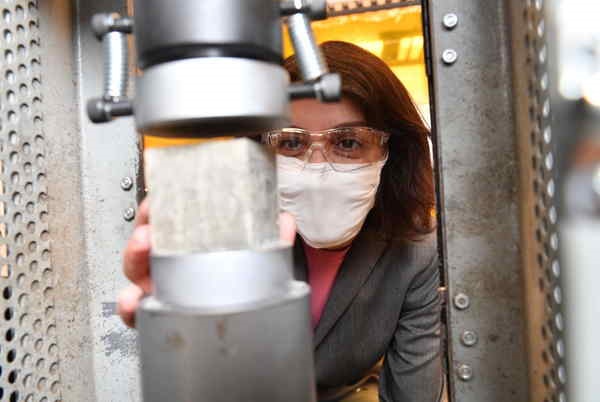Cement is a widely used material for construction. Due to its durability and strength, it is used to build various types of Buildings, Bridges, Infrastructure projects and so on. After water Concrete is the most consumed material on Earth. However, it is an active contributor to greenhouse gas emissions. Keeping in mind the current climate condition and global warming, there is a need to adopt and introduce environmentally friendly materials.
A research team led by the Washington State University (WSU) has found that putting nanoparticles from shrimp shells into cement paste made the material significantly stronger.
According to Davis who led the research at WSU (Washington State University) said, ‘By developing these novel admixtures that enhance the strength of concrete, We can help reduce the amount of required cement and lower the carbon emissions of concrete. At the same time, seafood waste is a major problem for the fishing industry. It generates waste Between 6 million to 8 million pounds annually’. These wastes are dumped into the sea said by Huili, a research assistant professor. He is the author of the paper as well as the WSU composite materials and Engineering centre. He also quoted that we want to use waste materials as much as possible. ‘One person’s waste is another person’s treasure’, he said.
The WSU team investigated chitin materials at the nanoscale in their research. They found out that crab, shrimp, and lobster shells contain about 20-30% chitin. Chitin had an extra set of atoms that enabled the scientists to regulate the charge on the surface of the molecules and enabled them to understand how they act in the cement slurry. As they added nanocrystals of chitin to the cement, they were able to improve and target its properties, including its consistency, setting time, strength, and durability.
Chitin at the molecular scale happens to act as an atom- a functional group, which allows researchers to control the charge on the surface of the molecules as well as how they act on the cement slurry.
We could do that quite simply on the chitin because of the carboxyl group that sits in the chitin polymer,” said WSU Regents Professor Michael Wolcott., a corresponding author on the paper. He further said, through the research, we got success in strengthening the cement paste. As well as how the particles suspend themselves within the cement slurry and how they mix with other cement particles. They were able to improve cement properties in strength in how concrete can bend and improve in the ability to compressive strength also.
Researchers are hopeful to scale up the production of these additives on a larger scale. The above work was funded by the Department of Energy’s Advanced Research Agency – Energy (ARPA-E)Program. They support innovative and unconventional energy.



